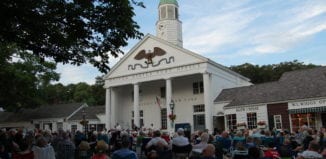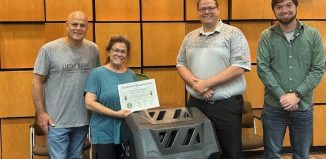‘Hope in the Water’ looks toward an abundant future
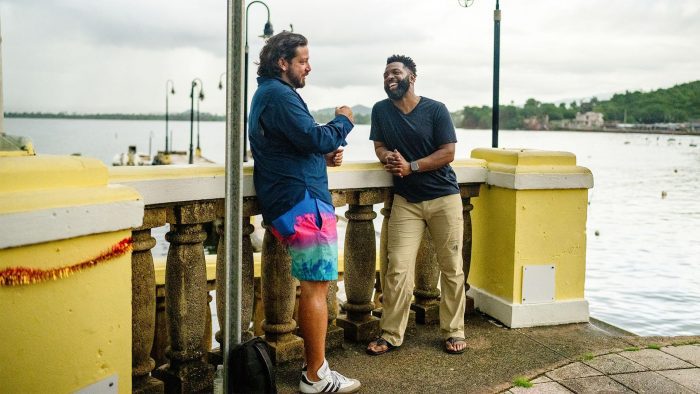
Reviewed by Jeffrey Sanzel
PBS’s Hope in the Water is a three-part docuseries investigating the world of aquafarmers and fishers. The series shows viable alternatives to providing food for an ever-growing population while supporting and sustaining the environment. Unlike many documentaries narrowing on the doom-and-gloom aspects, Hope in the Water leans into its name, celebrating individual and group efforts and emphasizing cooperative undertakings that have already made a difference. Climate change is touched upon but rarely central.
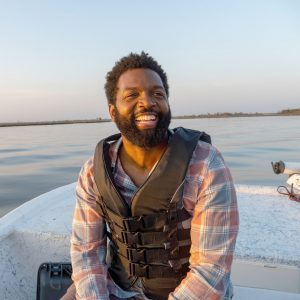
Hope in the Water comes from the multi-award-winning producer David E. Kelley (Love & Death, Lincoln Lawyer, Big Little Lies) in association with four-time James Beard Award and Emmy Award winner Chef Andrew Zimmern and his production company, Intuitive Content (What’s Eating America, Family Dinner, Andrew Zimmern’s Wild Game Kitchen, Feral).
Episode One, The Fish in the Sea, which premiered on June 19, breaks down into three sections. The first details the evolution of COAST—Community of Arran Seabed Trust—a Scottish grassroots movement that set out to “manage the seas on behalf of the next generation.” Inspired by a No-Take zone in New Zealand, COAST “campaigned to stop mobile fishing that damages [their] seabeds, jeopardizing future livelihoods and wildlife.” COAST saw the change and suspension of legal protections and faced governmental roadblocks but ultimately triumphed. The new approach led to a revitalization of the waters as well as a species abundance increase of 102%.
A joyously energetic Baratunde Thurston provides much of the narrative drive in the second section, which takes place in Puerto Rico. Thurston is the host and executive producer of America Outdoors with Baratunde Thurston and the creator and host of How to Citizen with Baratunde. The Emmy-nominated hyphenate (host-producer-writer-public speaker) is the ideal cheerleader for issues that intersect technology, politics, and climate.
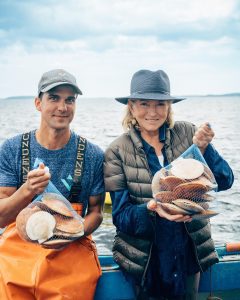
Devastated by 2017’s Hurricane Maria, the middle of the documentary tells of the founding of the World Central Kitchen (preparing and feeding over four million survivors) and the grants given to fishers for boat repairs, new engine purchases, and repairing the fishing ecosystem. At the heart is the fishing of the diamondback squid. The large sea creature, often up to sixty pounds and fished from depths as deep as 1,700 feet, is almost entirely meat. The shift promotes resilience and moves away from a dependence on imports.
The final segment shows Hawaii’s He’eisa Fishpond, eighty-eight acres and an eight-hundred-year-old location of traditional Hawaiian aquaculture. Here, one indigenous woman strives to grow fish traditionally, keeping one hundred percent of the resources local. (Hawaii is the largest consumer of fish per capita in the nation yet imports most of its seafood. The market economy overturned the long-standing fishpond culture early in the twentieth century.) This third chapter is the most intimate and personal, highlighting the power of the individual to engage the community.
The film is quickly—if often peripatetically—paced, with a constant cutting from interviews to broad oceanic vistas—rarely holding for more than fifteen seconds. (There is a vague sense that creators fear losing their audience.) In addition to an array of talking heads—activists, scientists, environmentalists, fishers, politicians—historical footage, personal photos, legal documents, and newspaper clippings flash and integrate throughout.
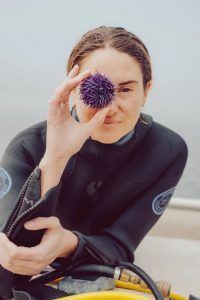
Episode One opens with a storm in Puerto Rico, played for dramatic effect. The entire sequence repeats when the narrative returns to this thread with a mostly tacit conclusion, justified with a tag: “These are real people, and the story is dangerous,” which is all “part of the cost of the food that we eat.” These are minor cavils in an otherwise engaging and refreshing boost of optimism. While the film presents a variety of facts—we eat twice as much seafood now as we did fifty years ago—statistics never bog down the film or obscure the story’s humanity.
In a predominantly upbeat approach, Hope in the Water embraces the oceans as the heart of the earth’s survival. The film’s message is not one of “hands off.” It expresses the necessity to be aware of the environment but also acknowledges the “need to feed.” The film is a worthwhile fifty minutes that is a tribute to the strength of community and the power of individuals to make change for the greater good. It “starts with us.”
The series continues on PBS with Farming the Water on June 26, which highlights solutions to the pollution and environmental issues surrounding farmed fish, and concludes with Changing the Menu on July 3, taking up a diversification of seafood. To view the entire series online, visit www.pbs.org/show/hope-in-the-water/.

